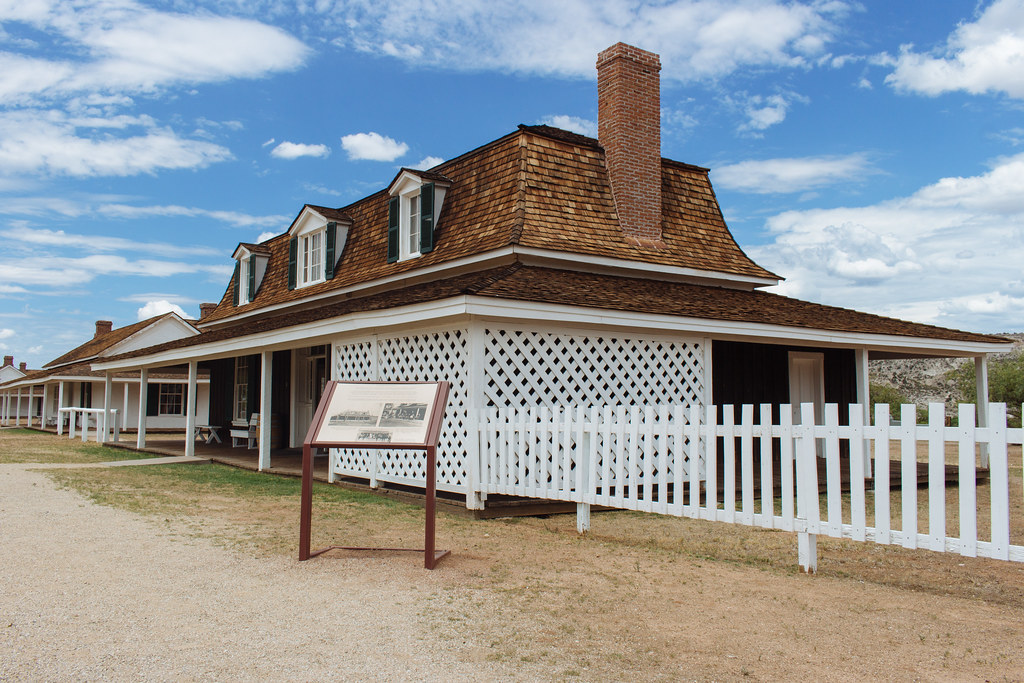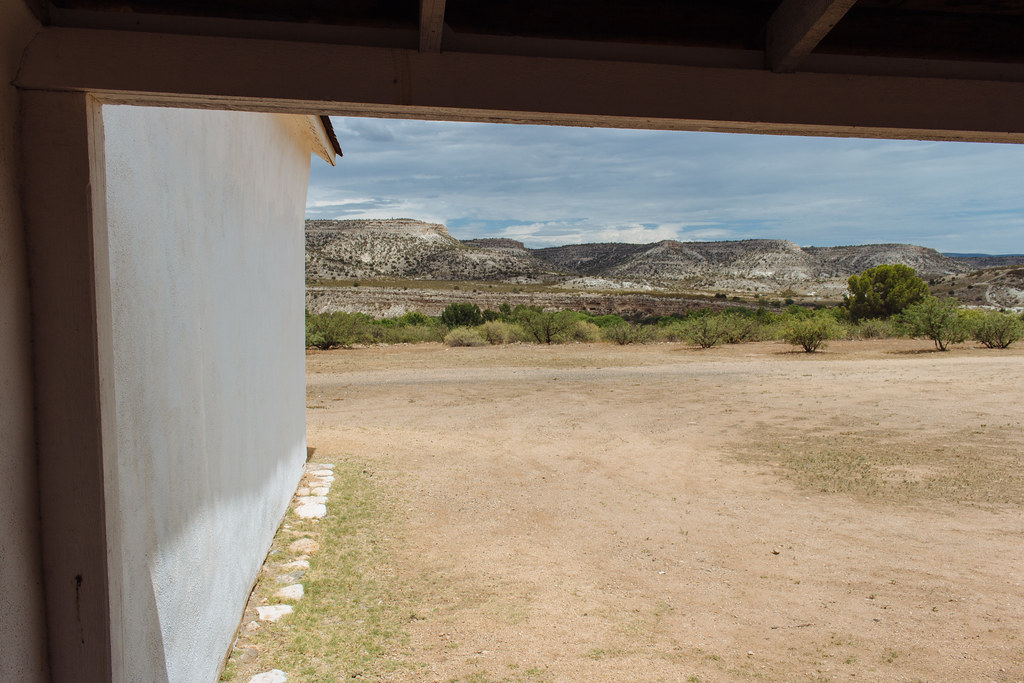Fort Verde State Historic Park: A Reminder of Arizona’s Indian Wars

|
| Commanding Officer’s Quarters |
Stand in the breezeway of a charming, 150-year-old home, complete with period furniture and decorations, and you’ll finally get a chance to cool off from the Arizona heat.
But you’ll be chilled when you realize why there’s a fort standing in the middle of Arizona, hundreds of miles from the nearest border. Fort Verde State Historic Park is the remnant of a military outpost built during the final campaigns of the Indian Wars.

|
| Administration building |
As Anglo settlers began to pour into the fertile Verde Valley region, the U.S. Army was tasked with protecting them from raids by Yavapai and Western Apache people defending their ancestral land. So Camp Verde was set up in 1865, later becoming the permanent Fort Verde in 1871. Years of battles between U.S. troops and Yavapai and Apache fighters culminated in the establishment of the Rio Verde Reservation, a substantial swath of rich farmland on either side of the Verde River.
In the winter of 1875, however, the Yavapai and Apache were forced to march 180 miles across mountainous territory to join multiple other tribes at the San Carlos reservation, another Trail of Tears dubbed the “Exodus Trail.” (Read more in this excellent article from Arizona Highways Magazine.) Hundreds died along the way, and it was years before they were allowed to return to the Verde Valley. But by the time they came back, their old reservation land had been given away by the federal government to settlers and miners.

|
| Inside the quarters with period furniture |
I visited this handful of buildings on my first road trip around Arizona after moving to the state in 2016. My itinerary included exciting places such as Flagstaff, the red rocks of Sedona, and Petrified Forest National Park. Safe to say, I was a little underwhelmed by what little is left of Fort Verde. But stopping by here gave me—yet another (white) newcomer to Arizona—some important historical context about my new home. Arizona is a state today because the U.S. federal government engaged in violence against Indigenous people to assert control over a territory it purchased in 1848 from Mexico.

|
| Administration building’s porch |
Yet despite centuries of war, a lost reservation, forced removal to a distant land, the Yavapai and Apache still live in the Verde Valley today—in fact, just a few blocks south of the state park. Another part of the Yavapai-Apache Indian Reservation is just up the road, where tribal members operate Cliff Castle Casino and a variety of other businesses.

|
| Mountains on the edge of town |
For more on this era of the Indian Wars of Arizona, read chapter 5, “The Military Conquest of Indian Arizona,” in Arizona: A History by Thomas E. Sheridan, revised edition (Tucson, Ariz.: University of Arizona Press, 2012), pp. 84–107.
How to get there
Fort Verde State Historic Park gave its name to the town of Camp Verde, which is planted right in the geographic center of Arizona. From Interstate 17, take exit 287 and head east on State Route 260. Turn left (north) onto Main Street, then right (east) on Hollamon Street. The parking lot is three blocks down the road.